This article was medically reviewed by Lacy Windham, MD. Lacy Windham, MD, is a Board-Certified Obstetrician & Gynecologist in Cleveland, Tennessee. Dr. Windham attended medical school at the University of Tennessee Health Science Center in Memphis. Her residency was completed at Eastern Virginia Medical School in Norfolk, Virginia. She was the recipient of multiple awards during her residency training, including Most Outstanding Resident in Maternal Fetal Medicine, Most Outstanding Resident in Oncology, Most Outstanding Resident Overall, and Special Award in Minimally Invasive Surgery.
There are 19 references cited in this article, which can be found at the bottom of the page.
This article has been viewed 153,577 times.
Experts say chlamydia often causes no symptoms at first, so you may not even realize you have it. Chlamydia is a very common sexually transmitted infection (STI) caused by Chlamydia trachomatis bacteria, and you can contract it during vaginal, anal, or oral sex.[1] Research suggests that untreated chlamydia may increase your risk of contracting other infections, having an ectopic pregnancy, or becoming infertile.[2] Fortunately, chlamydia is a curable condition, so it's possible to make a full recovery with the right treatment.
Steps
Getting a Medical Diagnosis
-
1Be aware of the symptoms and signs of chlamydia. Although chlamydia often presents few symptoms in its early stages, it’s important to be aware of any symptoms you may exhibit. Consult your doctor for a definitive diagnosis if you notice any signs of chlamydia, especially if you’ve engaged in unprotected sex.[3]
- Both men and women can contract chlamydia and repeat infection is common.[4]
- The early stage of a chlamydial infection often has little symptoms and even when signs are present, usually within 1 to 3 weeks after infection, they may be mild.[5]
- Common symptoms of chlamydia are: painful urination, lower abdominal pain, vaginal discharge in women, discharge from the penis in men, painful sexual intercourse, bleeding between periods and after sex in women, or testicular pain in men.[6]
-
2Consult your doctor. If you experience any symptoms of chlamydia, including discharge from your genitals, or a partner has revealed they have chlamydia, make an appointment to see your doctor. She will run tests and confirm a diagnosis and develop the best treatment plan for you.[7]
- Tell your doctor about the symptoms you're experiencing, signs of chlamydia that you've noticed, as well as if you’ve had unprotected sex.
- If you’ve had chlamydia in the past and are experiencing a recurrence, contact your doctor to get a prescription.[8]
Advertisement -
3Undergo medical examinations. If your doctor suspects that you have chlamydia, she may order further medical examinations or tests. These simple screenings will help definitely diagnose the sexually transmitted disease and make it easier to develop a treatment plan.
- If you're a female, your doctor may swab the discharge from your cervix or vagina and submit the sample to a laboratory for testing.[9]
- If you're a male, your doctor may insert a slim swab into the opening of your penis and swab the discharge from your urethra. She will then submit the sample to a laboratory for testing.[10]
- If you've engaged in oral or anal sex, your doctor takes a swab of your mouth or anus for chlamydia testing.[11]
- In some cases, a urine sample may detect a chlamydia infection.[12]
Treating Chlamydia
-
1Get treatment for chlamydia. If your doctor diagnoses you with chlamydia, she’ll prescribe you a course of antibiotics, which is the only way to treat the disease besides prevention. Generally the infection will disappear after 1 or 2 weeks.[13]
- The first line treatment is azithromycin (1 g taken orally in a single dose) or doxycycline (100 mg taken orally twice daily for 7 days).[14]
- Your treatment may be a one-time dose or you may need to take it daily or many times a day for 5-10 days.[15]
- Your sexual partner(s) also require treatment even if they have no symptoms of chlamydia. This will keep you and your partner(s) from passing the disease back and forth between one another.[16]
- Do not share your medication for chlamydia with anyone.[17]
-
2Screen and treat newborns. If you are pregnant and have chlamydia, your doctor may prescribe azithromycin in your second or third trimester to decrease the risk of transmitting the disease to your baby. Your chlamydia infection will be treated during pregnancy at the time of discovery you will be tested again to ensure the infection has resolved. After birth, your doctor will screen your newborn and treat her accordingly.[18]
- If you give birth and transmit chlamydia to your newborn, your doctor will treat the disease with antibiotics to prevent pneumonia or a serious eye infection in your baby.[19]
- Most doctors will prophylactically administer an erythromycin eye ointment to help prevent a chlamydia-related eye infection from affecting your newborn’s eyes.[20]
- You and your doctor should monitor your newborn for chlamydia-related pneumonia for at least the first three months of her life.[21]
- If your baby has chlamydia-related pneumonia, your doctor will likely prescribe erythromycin or azithromycin.[22]
-
3Avoid all sexual activity. During the course of your chlamydia treatment, abstain from all sexual activity including oral and anal sex. This may help from spreading the disease to your partner and decrease your risk of reinfection.[23]
-
4See doctor if your symptoms persist after treatment. If your symptoms of chlamydia persist after a course of treatment, it’s important to see your doctor as soon as possible. Managing and treating these symptoms and the disease will help ensure that you don’t have a recurrence or contract a more serious condition or complication.[26]
- Not addressing symptoms or recurrences can result in reproductive health complications such as pelvic inflammatory disease, which can permanently damage reproductive organs, and ectopic pregnancy.[27]
Preventing Chlamydia and Recurrences
-
1Get tested regularly for chlamydia. If a doctor treated you for an initial chlamydia infection, get retested for the disease in approximately three months and at regular intervals thereafter. This will help ensure that the disease has left your system and that you are no longer contagious.[28]
- Continue testing for sexually transmitted infections with each new sexual partner.
- Recurrence of chlamydia is very common and is often treated with the same course of antibiotics. If infection recurs after a follow up test that showed no infection, this is a new infection.
-
2Don’t use vaginal douching products. Avoid using douches if you have or have had chlamydia. These products kill good bacteria and raise the risk for infection or recurrence.[29]
-
3Practice safe sex. The best way to treat chlamydia is to avoid getting it. Using condoms and limiting the number of your sex partners will minimize your risk for contracting the disease or having a recurrence.[30]
- Always use condoms during sexual contact. Although condoms will not eliminate your risk of getting chlamydia, they will reduce your risk.
- Abstain from any sexual intercourse or sexual activity, including anal and oral sex, during treatment. Abstinence can help avoid reinfection or passing the STD to your partner.
- The more sexual partners you have, the higher your risk of getting chlamydia is. Try to limit the number of partners you have to decrease your risk, and always use condoms with your partners.[31]
-
4Be aware of the risk factors. Certain factors can increase your risk of getting chlamydia. Being aware of them can help you reduce the likelihood of contracting the disease.[32]
- If you are under 24 years of age you are at a higher risk for the disease.[33]
- If you’ve had multiple sex partners within the past year you are more likely to get chlamydia.[34]
- Inconsistent use of condoms can significantly increase your risk of getting chlamydia.[35]
- If you have a history of sexually transmitted diseases, including chlamydia, you are at an increased risk of contracting the disease.
References
- ↑ https://medlineplus.gov/chlamydiainfections.html
- ↑ https://www.stanfordchildrens.org/en/topic/default?id=chlamydia-can-lead-to-infertility-1-2517
- ↑ https://www.plannedparenthood.org/learn/stds-hiv-safer-sex/chlamydia/chlamydia-symptoms
- ↑ http://www.cdc.gov/std/chlamydia/treatment.htm
- ↑ https://www.nhs.uk/conditions/chlamydia/symptoms/
- ↑ https://www.plannedparenthood.org/learn/stds-hiv-safer-sex/chlamydia/chlamydia-symptoms
- ↑ https://my.clevelandclinic.org/health/diseases/4023-chlamydia
- ↑ https://www.nhs.uk/conditions/chlamydia/treatment/
- ↑ https://www.nhs.uk/conditions/chlamydia/diagnosis/
- ↑ https://medlineplus.gov/lab-tests/chlamydia-test/
- ↑ https://www.acog.org/womens-health/faqs/chlamydia-gonorrhea-and-syphilis
- ↑ https://medlineplus.gov/lab-tests/chlamydia-test/
- ↑ https://www.nhs.uk/conditions/chlamydia/treatment/
- ↑ https://www.cdc.gov/std/treatment-guidelines/chlamydia.htm
- ↑ https://medlineplus.gov/chlamydiainfections.html
- ↑ https://www.cdc.gov/std/treatment-guidelines/chlamydia.htm
- ↑ https://www.cdc.gov/std/chlamydia/treatment.htm
- ↑ https://www.healthychildren.org/English/health-issues/conditions/sexually-transmitted/Pages/Chlamydia.aspx
- ↑ https://www.healthychildren.org/English/health-issues/conditions/sexually-transmitted/Pages/Chlamydia.aspx
- ↑ https://www.healthychildren.org/English/ages-stages/prenatal/delivery-beyond/Pages/Erythromycin-Ointment.aspx
- ↑ https://www.cdc.gov/std/treatment-guidelines/chlamydia.htm
- ↑ https://www.cdc.gov/std/treatment-guidelines/chlamydia.htm
- ↑ https://my.clevelandclinic.org/health/diseases/4023-chlamydia
- ↑ https://my.clevelandclinic.org/health/diseases/4023-chlamydia
- ↑ https://www.nhs.uk/conditions/chlamydia/treatment/
- ↑ http://www.cdc.gov/std/chlamydia/treatment.htm
- ↑ http://www.cdc.gov/std/chlamydia/treatment.htm
- ↑ https://my.clevelandclinic.org/health/diagnostics/22352-chlamydia-test
- ↑ https://www.plannedparenthood.org/learn/stds-hiv-safer-sex/chlamydia/how-is-chlamydia-prevented
- ↑ https://www.plannedparenthood.org/learn/stds-hiv-safer-sex/chlamydia/how-is-chlamydia-prevented
- ↑ https://my.clevelandclinic.org/health/diseases/4023-chlamydia#prevention
- ↑ https://www.cdc.gov/std/chlamydia/stdfact-chlamydia-detailed.htm
- ↑ https://www.cdc.gov/std/chlamydia/stdfact-chlamydia-detailed.htm
- ↑ https://www.cdc.gov/std/chlamydia/stdfact-chlamydia-detailed.htm
- ↑ https://www.cdc.gov/std/chlamydia/stdfact-chlamydia-detailed.htm
About This Article
To treat chlamydia, it's important that you visit your doctor to get a proper diagnosis and a prescription for a course of antibiotics, which is the only way to treat chlamydia. After you visit your doctor, follow their recommended treatment plan and take your medication as instructed, which should help your infection clear up in 1 to 2 weeks. Keep in mind that any sexual partners you have also require treatment, even if they have no symptoms. For more advice from our Medical co-author, like how to prevent chlamydia, read on.
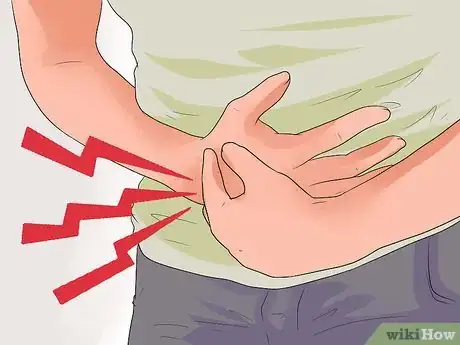
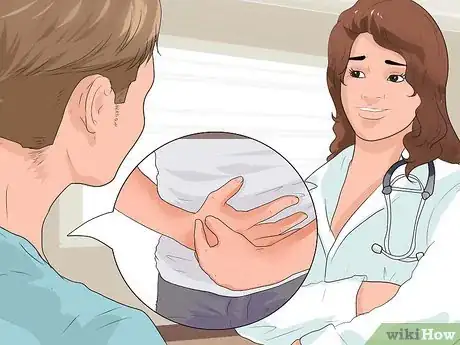
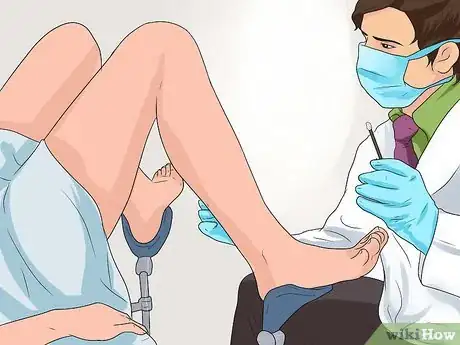
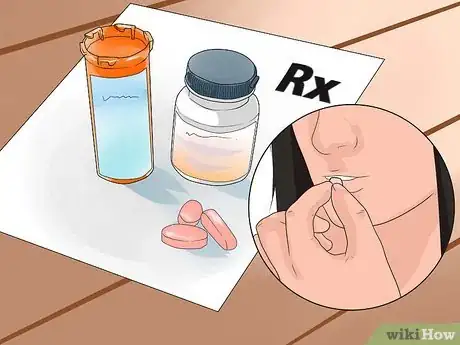
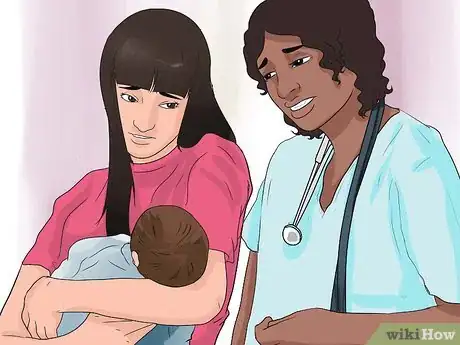

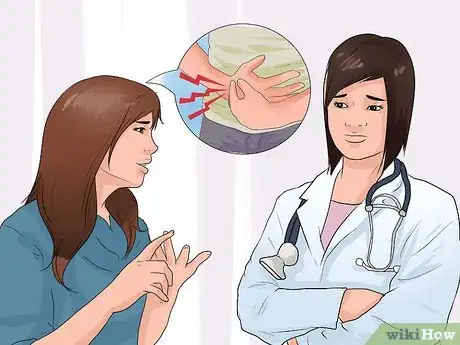
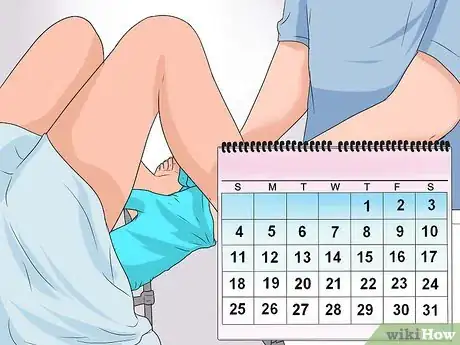

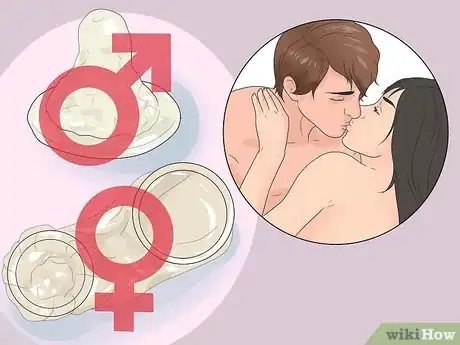

-Step-9.webp)
-Step-10-Version-4.webp)

-Step-17.webp)
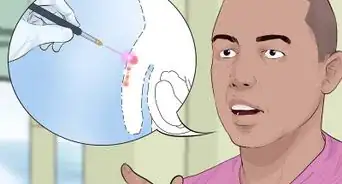

-Step-11-Version-2.webp)



-Step-10.webp)
-Step-13.webp)
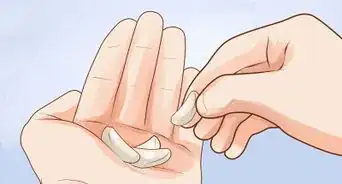
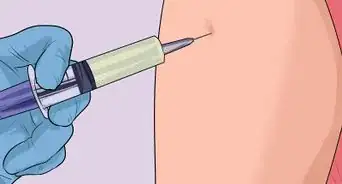







-Step-9.webp)
-Step-10-Version-4.webp)

-Step-17.webp)



































Medical Disclaimer
The content of this article is not intended to be a substitute for professional medical advice, examination, diagnosis, or treatment. You should always contact your doctor or other qualified healthcare professional before starting, changing, or stopping any kind of health treatment.
Read More...